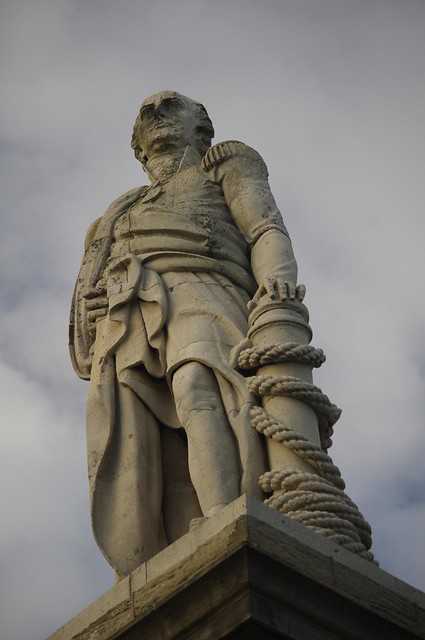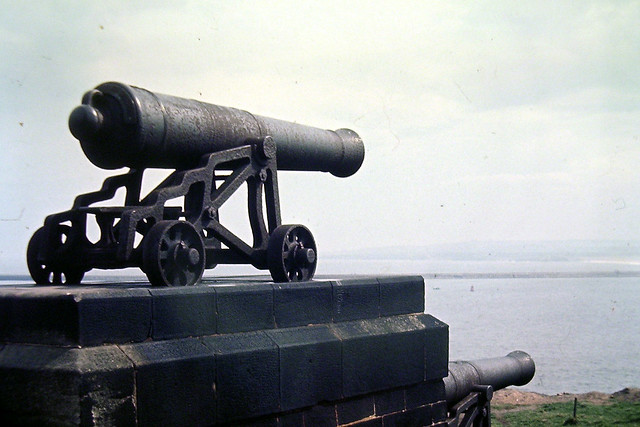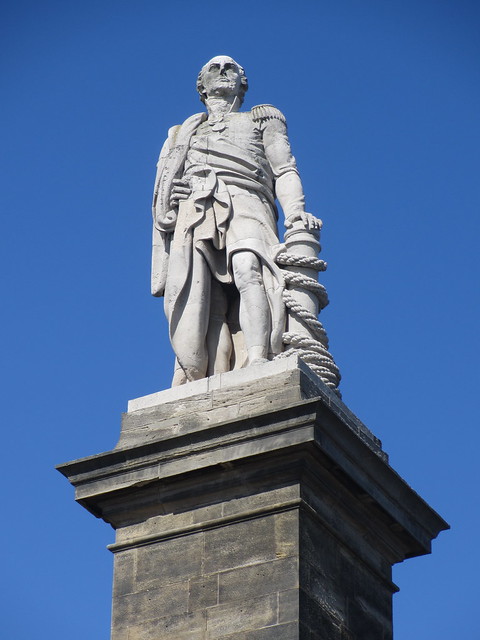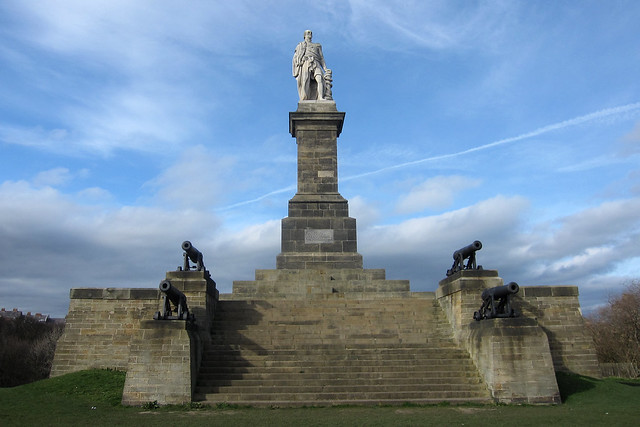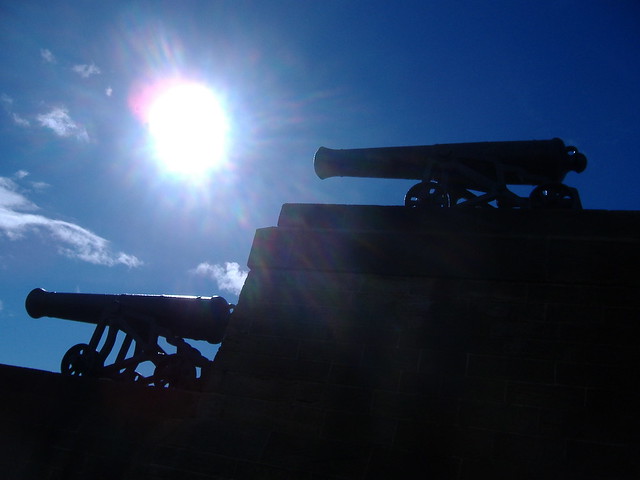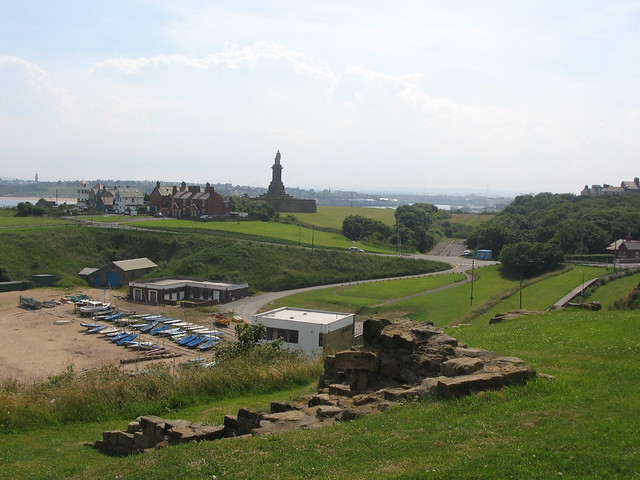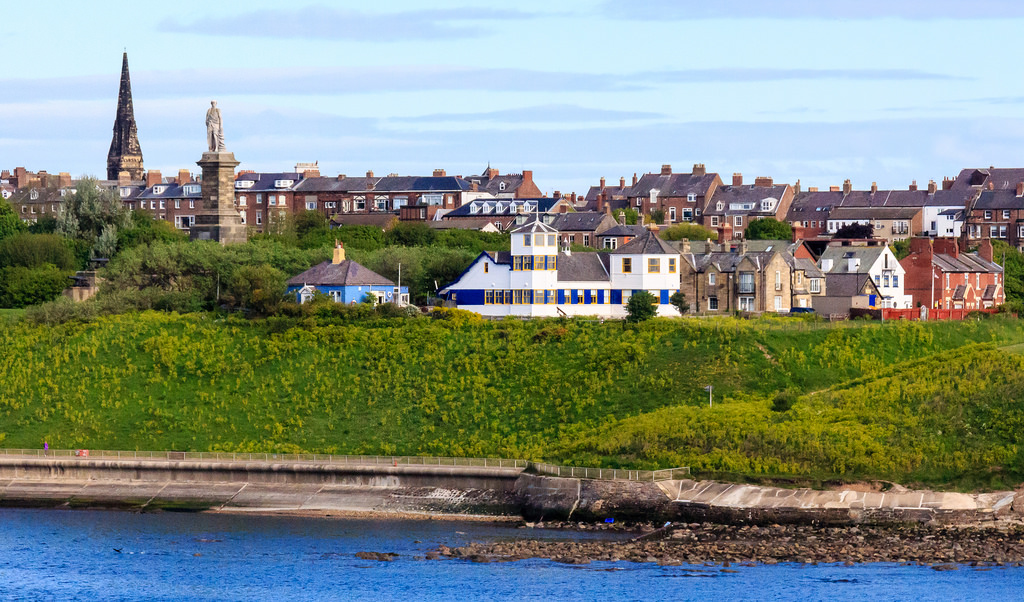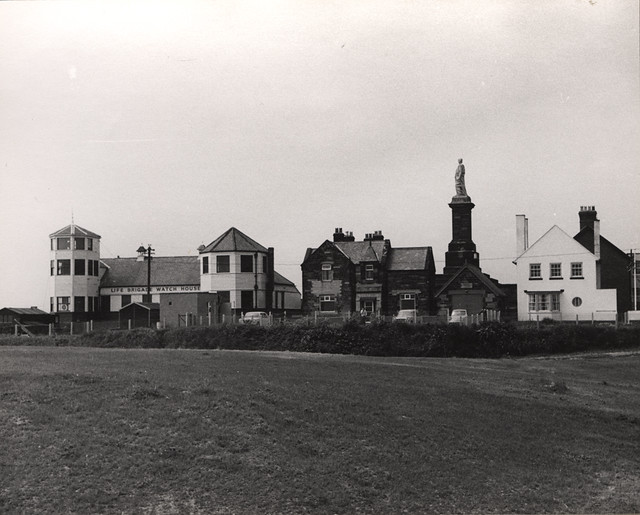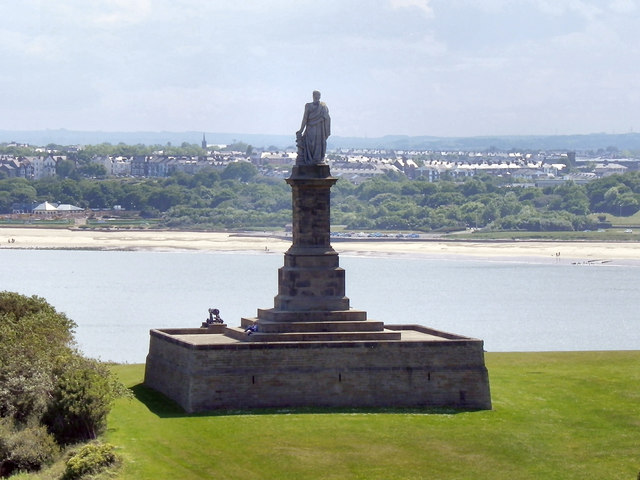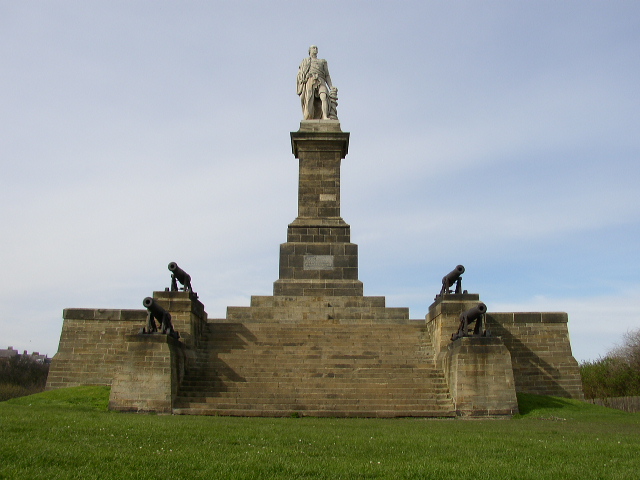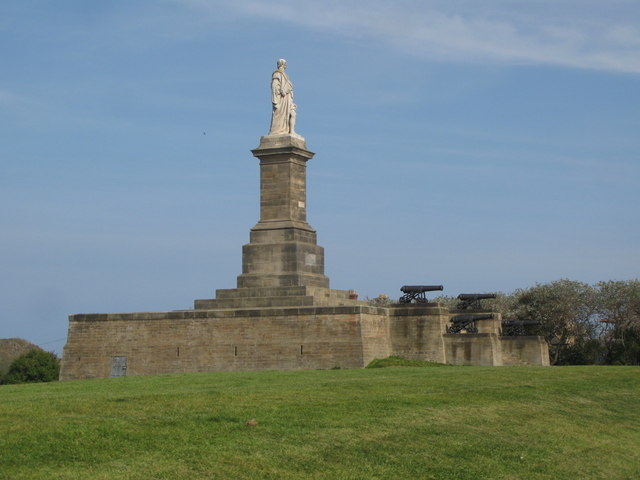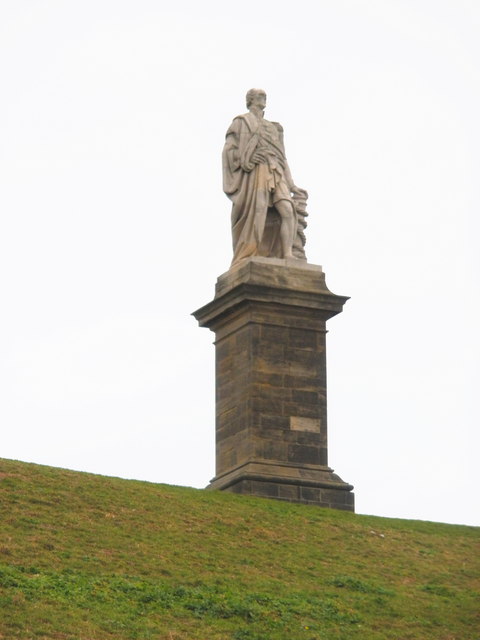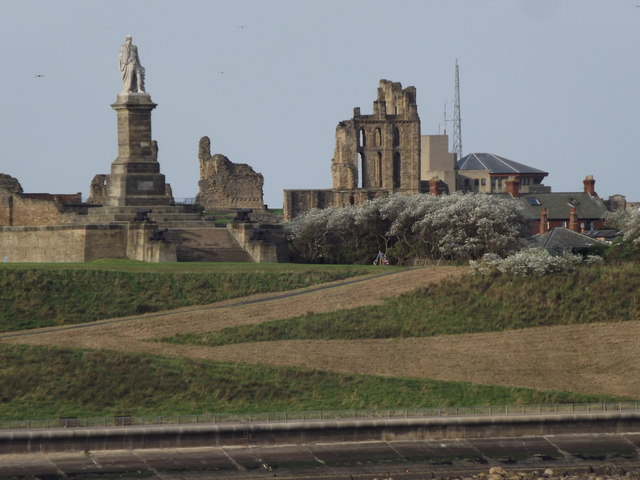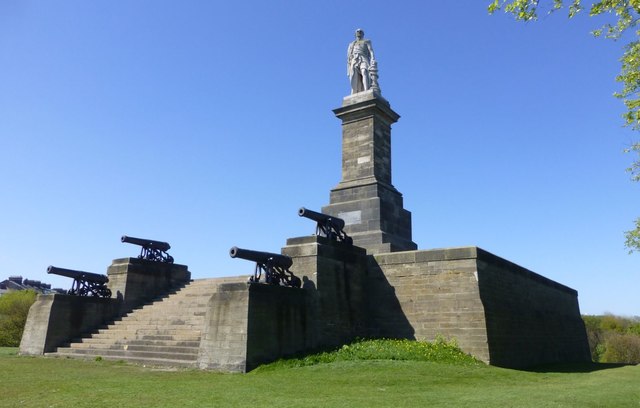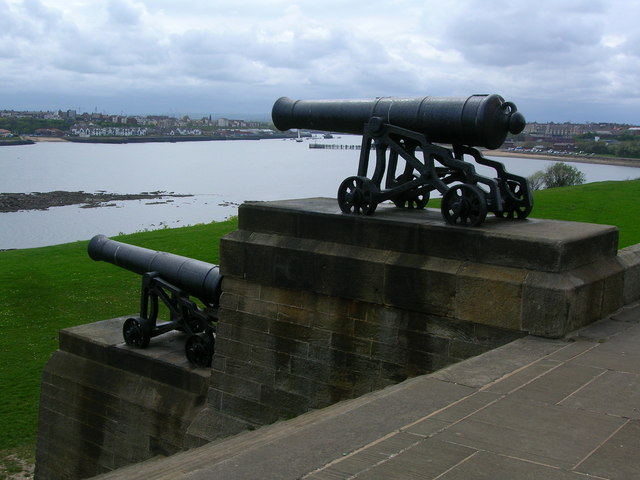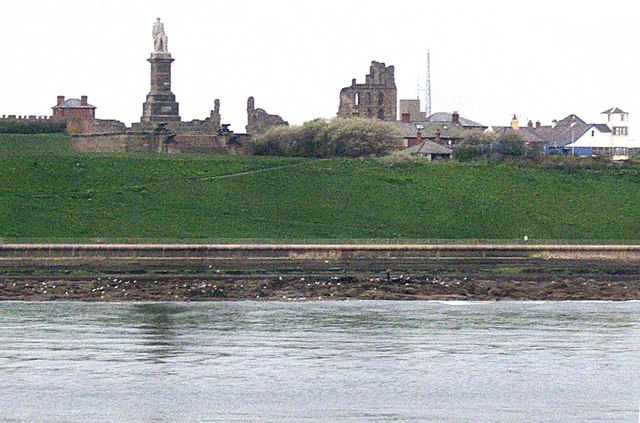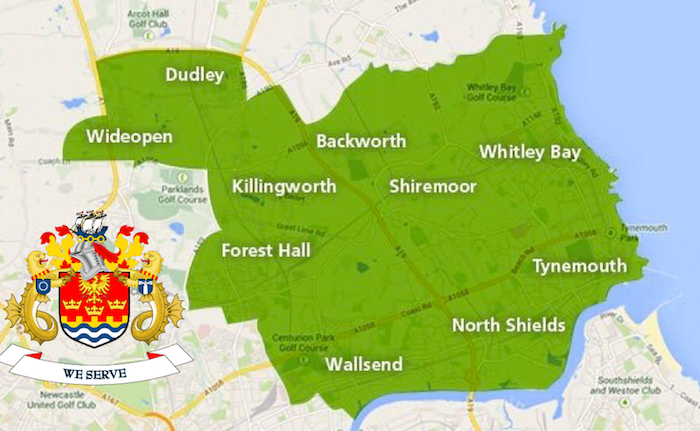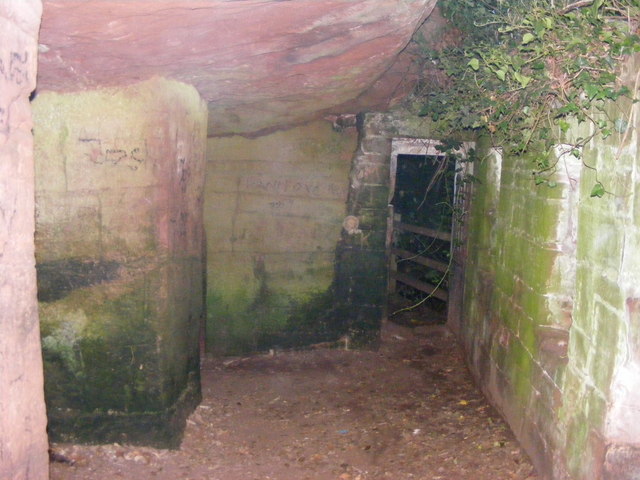Topics > Tyne and Wear > North Tyneside > Tynemouth > Collingwood Monument
Collingwood Monument
The Collingwood Monument was built in 1845 in honour of Admiral Lord Collingwood, who led the British Fleet to victory at the Battle of Trafalgar after the death of Nelson, saving Britain from likely invasion during the Napoleonic Wars. The statue was sculpted by John Graham Lough, standing on a pedestal designed by John Dobson. The prominent position of the monument means the statue can be seen from the sea and the River Tyne, and marks Collingwood's family connection with North Shields. The 4 cannon on the steps of the monument came from his flagship, the Royal Sovereign. The monument is Grade II* listed on the National Heritage List for England.
The Collingwood Monument is a Grade II* listed monument in Tynemouth, England, dedicated to Vice Admiral Lord Cuthbert Collingwood. A Napoleonic-era admiral noted for being second-in-command to Admiral Lord Nelson during the Battle of Trafalgar, Collingwood is sometimes referred to as the forgotten hero of Trafalgar. The monument's base is by John Dobson and the statue is a work of the sculptor John Graham Lough. It is situated just off of Front Street in Tynemouth and overlooks the mouth of the River Tyne.
Background
Lord Collingwood was born in Newcastle upon Tyne, the son of a merchant. He attended the Royal Grammar School and joined the Royal Navy as a volunteer at the age of 12. From there he continued his nautical education under his cousin Captain Richard Brathwaite. After serving in the British Naval Brigade at the Battle of Bunker Hill, Collingwood was commissioned in 1775 as a lieutenant. His first command was HMS Badger, after succeeding Horatio Nelson, and his first major command was HMS Sampson. During the Battle of Trafalgar Collingwood assumed command of the British fleet after the death of Lord Nelson, transferring to . Collingwood then led the fleet and completed the battle plans that he and Nelson had created together. For his role in the battle Collingwood was given the thanks of both houses of Parliament and awarded a pension of £2,000 per annum, as well as being promoted on 9 November 1805 to Vice-Admiral of the Red and raised to the peerage as Baron Collingwood, of Caldburne and Hethpool in the County of Northumberland.
In 1805 Collingwood was appointed to the Commander-in-Chief, Mediterranean Fleet. After requesting to be relieved of his command the Government stated that it urgently required an admiral of his calibre to lead against the dangers of the French and her allies, and that his country could therefore not dispense of him. However, in 1809 his health declined and he was granted leave. In 1810 Collingwood died of cancer on board the as he sailed for England. He was laid to rest beside Lord Nelson in St Paul's Cathedral. During his career he had served in the American Revolutionary War, the French Revolutionary Wars and the Napoleonic Wars, and had been awarded three Naval Gold Medals, making him one of only three people to share the distinction of earning a total of three.
The Monument
The monument was erected to commemorate Collingwood and his connection to North Shields; it was deliberately positioned so that it could be seen from the Tyne. It was erected by public subscription. The architect was John Dobson and John Graham Lough was responsible for the sculpture. The monument features a high wide base, with slit openings and a door in the rear. A flight of steps leads to the base of the plinth and side walls flank the steps. Upon the walls are four cannon from , Collingwood's flagship during the Battle of Trafalgar. The statue of Collingwood stands upon this plinth and the is draped in a cloak over Collingwood's Royal Navy uniform. The figure's left hand rests on a bollard wrapped in rope.
The monument was completed in 1845 except for the cannon, which were added in 1849.
The inscription on the plinth reads:
THIS MONUMENT
was erected by public subscription to the memory of
ADMIRAL LORD COLLINGWOOD
who in the Royal Sovereign on the 21st October 1805 led the British fleet
into action at Trafalgar and sustained the sea fight for upwards of an hour
before the other ships were within gun shot which caused Nelson to exclaim
'SEE HOW THAT NOBLE FELLOW COLLINGWOOD TAKES HIS SHIP INTO ACTION'
He was born at Newcastle upon Tyne 1748 and died in the service
of his country on board of the VILLE DE PARIS on 7 March 1810
AND WAS BURIED IN ST PAUL'S CATHEDRAL
THE FOUR GUNS UPON THIS MONUMENT BELONGED TO HIS SHIP THE
"ROYAL SOVEREIGN"
Visit the page: Collingwood Monument for references and further details. You can contribute to this article on Wikipedia.

Co-Curate Page
Admiral Lord Collingwood (1748 - 1810)
- Overview Further Details "Most of us know the name Collingwood from walking down his street in Newcastle or past his imposing monument in Tynemouth...but few remember his crucial role in …

Co-Curate Page
John Dobson (1787 - 1865)
- Overview About John Dobson Buildings by John Dobson John Dobson was a 19th centaury architect in the North of England. He had a prolific career, designing over 50 churches and …
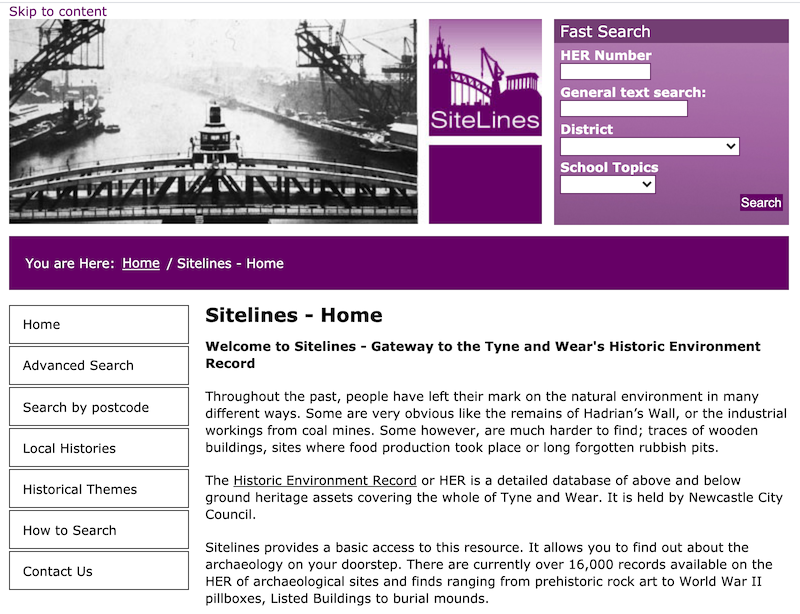
from http://twsitelines.info/SMR/1…
Tyne and Wear HER(1976): Tynemouth, Collingwood Monument
- "Built in 1847 by John Dobson with a statue by Lough. The colossal figure of the Admiral was a large size, 7 metres high,so that it could be seen by …
Added by
Simon Cotterill
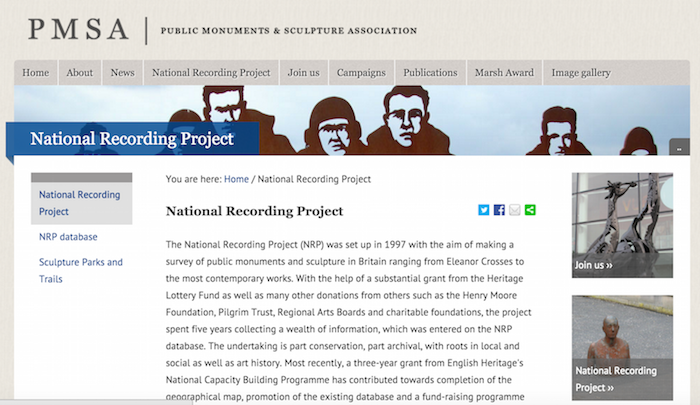
from https://www.vads.ac.uk/digita…
Monument to Admiral Lord Collingwood
- Detailed summary of the monument and its history.
Added by
Simon Cotterill
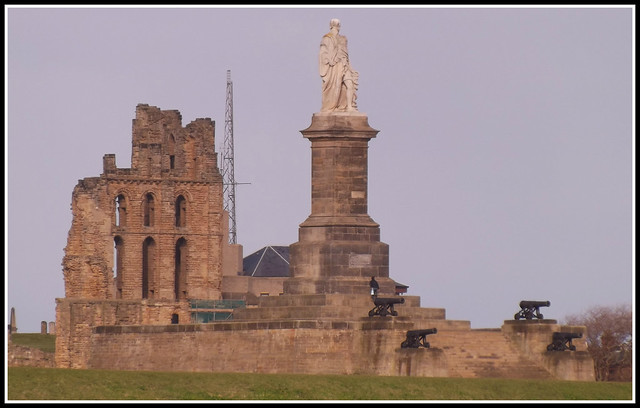
from Flickr (flickr)
South Shields to Tynemouth...28 x Optical Zoooooooom.........
Pinned by Simon Cotterill
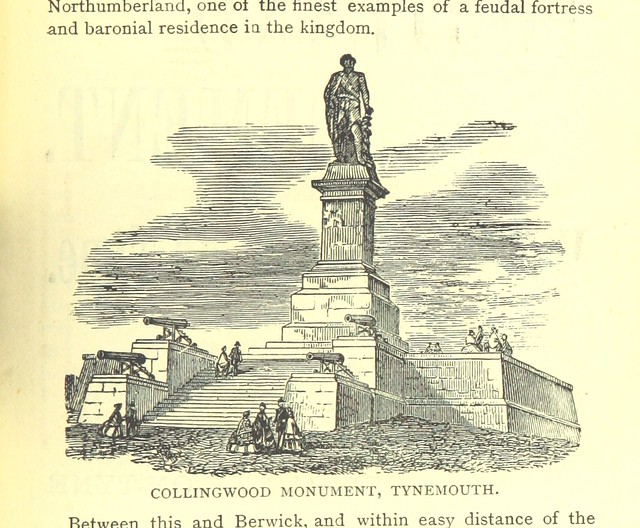
from Flickr (flickr)
Image taken from page 147 of 'The Jubilee handbook of Newcastle-upon-Tyne, and places of interest in the North of England, etc'
Pinned by Simon Cotterill

from Youtube (youtube)
Drone - Tynemouth, Collingwood Monument and Tynemouth Priory 10/08/2016 - (4K)
Pinned by Simon Cotterill
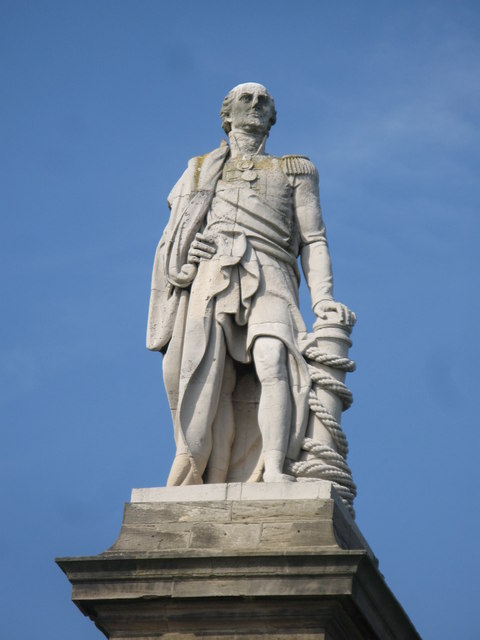
from Geograph (geograph)
Admiral Lord Collingwood of Hethpool and Coldburn
Pinned by Simon Cotterill
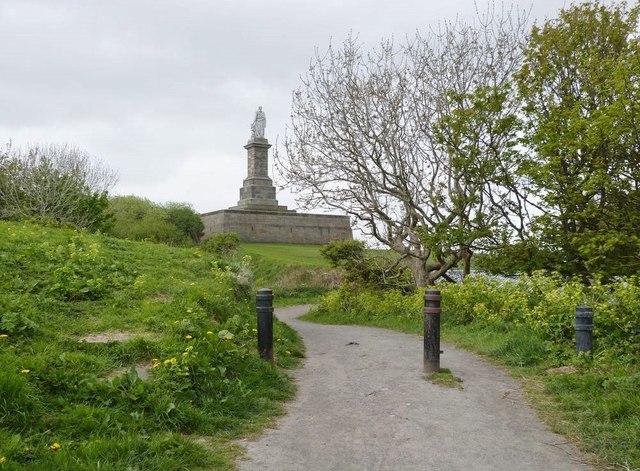
from Geograph (geograph)
Footpath up to the monument to Admiral Lord Collingwood
Pinned by Simon Cotterill
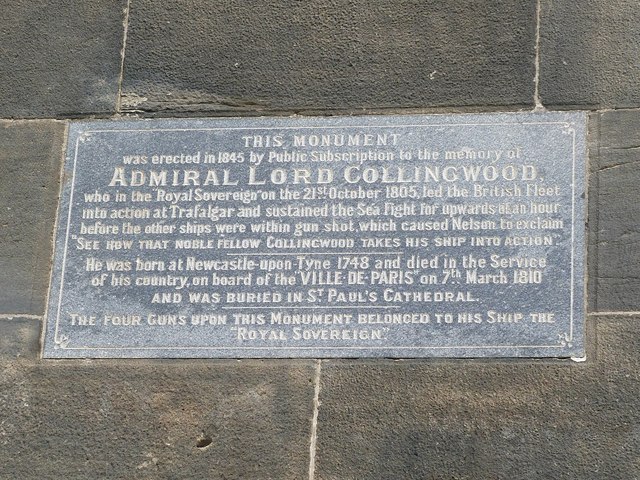
from Geograph (geograph)
Close up of the plaque attached to the plinth on the Collingwood Monument
Pinned by Simon Cotterill


Co-Curate Page
Admiral Lord Collingwood (1748 - 1810)
- Overview Further Details "Most of us know the name Collingwood from walking down his street in Newcastle or past his imposing monument in Tynemouth...but few remember his crucial role in …

Co-Curate Page
John Dobson (1787 - 1865)
- Overview About John Dobson Buildings by John Dobson John Dobson was a 19th centaury architect in the North of England. He had a prolific career, designing over 50 churches and …

from http://twsitelines.info/SMR/1…
Tyne and Wear HER(1976): Tynemouth, Collingwood Monument
- "Built in 1847 by John Dobson with a statue by Lough. The colossal figure of the Admiral was a large size, 7 metres high,so that it could be seen by …
Added by
Simon Cotterill

from https://www.vads.ac.uk/digita…
Monument to Admiral Lord Collingwood
- Detailed summary of the monument and its history.
Added by
Simon Cotterill

from Flickr (flickr)
South Shields to Tynemouth...28 x Optical Zoooooooom.........
Pinned by Simon Cotterill

from Flickr (flickr)
Image taken from page 147 of 'The Jubilee handbook of Newcastle-upon-Tyne, and places of interest in the North of England, etc'
Pinned by Simon Cotterill

from Youtube (youtube)
Drone - Tynemouth, Collingwood Monument and Tynemouth Priory 10/08/2016 - (4K)
Pinned by Simon Cotterill

from Geograph (geograph)
Admiral Lord Collingwood of Hethpool and Coldburn
Pinned by Simon Cotterill

from Geograph (geograph)
Footpath up to the monument to Admiral Lord Collingwood
Pinned by Simon Cotterill

from Geograph (geograph)
Close up of the plaque attached to the plinth on the Collingwood Monument
Pinned by Simon Cotterill
Tyne & Wear HER: 1976
List grade: 2*
Wikipedia: Collingwood Monument
Post code: NE30 4DQ
Borough: North Tyneside
Grid ref: NZ3718169069


